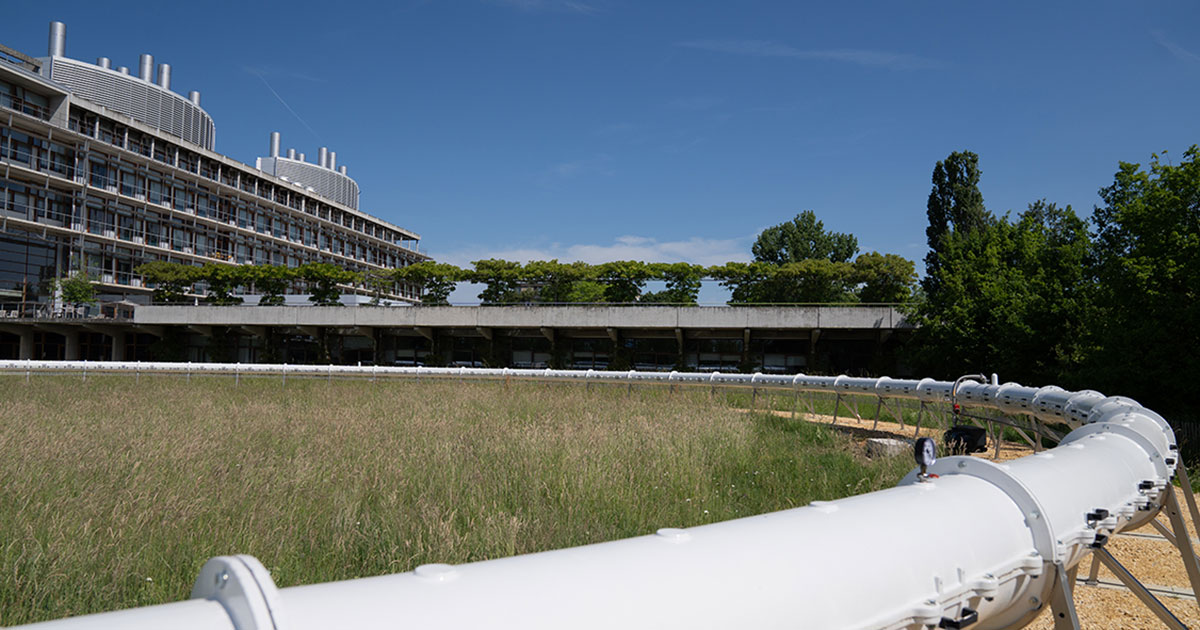Fostering innovation with 5G
Ready for the future − Swisscom 5G controls hyperloop at EPFL
In the future, hyperloop is set to make climate-friendly travel at near-sonic speed a reality. EPFL has been conducting intensive research into this mode of transport for the past years. Swisscom’s mobile phone network has a key role to play in this endeavour.
Text: Armin Schädeli , Picture: Swisscom
23 august 2022

What do a city break in Stockholm, a laptop from the Far East and a morning coffee from Ecuador have in common? At first glance, not a lot. But, in actual fact, they all involve journeys. Travel is a luxury that many of us are unwilling to do without. Many of the goods and products that we use on a daily basis come from other countries and have to be transported long distances before they reach us. In this context, the idea of climate-friendly, efficient travel and freight transport becomes very appealing. This is the motivation behind hyperloop.
Hyperloop was invented as a potential mass transportation model of the future, using an ultra-fast, ground-based transportation system comprising tubes that connect destinations. Inside these tubes, a vacuum is created, allowing the vehicles, or pods, travelling through them to move at very high speeds due to the low aerodynamic drag. Hyperloop’s benefits include ultra-fast travelling speeds of more than 600 kilometres per hour. Such speeds massively reduce the time taken to travel between large cities. Moreover, hyperloop’s model, based on all-electric operation using sustainably generated electricity, makes this type of travel very environmentally friendly.
In the distant future, hyperloop could enable extremely fast, environmentally friendly travel.
EPFL and Swisscom conduct joint research into hyperloop
Around a year ago, EPFL built the first hyperloop test track in Europe. “From here, a dozen of students and scientists are conducting research into the future of mass transportation,” says Andreas Burg, Professor of Telecommunication at EPFL. The circular testing facility on the campus simulates an infinitely long hyperloop and contains a remotely controlled pod. “To ensure it can be controlled, the pod needs to be connected wirelessly,” says Andreas Burg. This is where 5G comes into play: to control the pod in real time, Swisscom provides the facility with the latest 5G mobile generation. Adrian Schumacher, Swisscom mobile network expert, says: “The vacuum tubes in the hyperloop system are made of metal and obstruct mobile signal reception.” Swisscom has therefore equipped the facility with its own mobile radio cell. Adrian Schumacher: “The pods move at ultra-high speeds, placing high demands on wireless data transmission. The latest 5G mobile generation is ideal for transferring high data volumes and enabling the system to be controlled with very low latency, or response time. So 5G can show off its two major advantages over 4G: high bandwidths and low latency.
“The 5G network allows us to control the pod and collect data, which is vital to our ongoing research into hyperloop systems.”
Andreas Burg
EPFL will officially launch its hyperloop during late summer 2022, and research and development will continue until then.
Ready for the future with 5G
This type of transportation is underpinned by the mobile network. 5G supports hyperloop research and development, which will make the vision of climate-friendly, efficient travel and freight transport a reality.